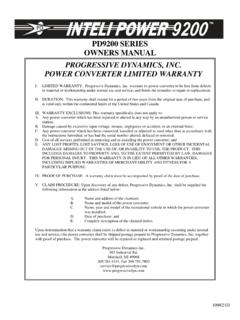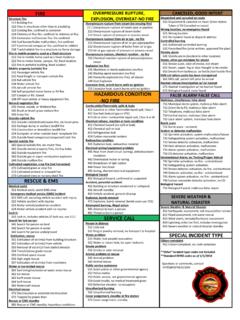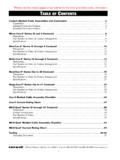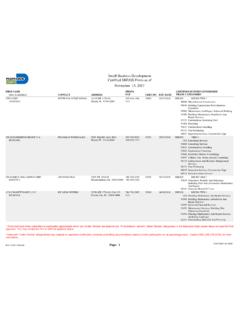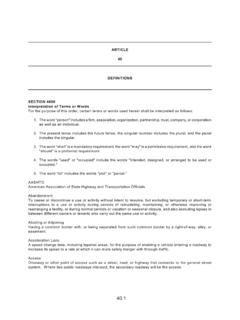Transcription of SUBURBAN MANUFACTURING COMPANY Post …
1 SUBURBAN MANUFACTURING COMPANY . post office Box 399. Dayton, Tennessee 37321. SUBURBAN . DYNATRAIL. FURNACES. Service Manual NT- 12S NT- 16S NT-20S. NT-24SP NT-30SP NT-34SP. NT-25K NT-30K NT-35K. NT-42T. INDEX Page Safety 2. Furnace Model Information 2. General Service Information 3. Installation Venting 3. Return Air 4. Ducting 4. Gas Pressure Requirements/Service Tools 4. Sequence of Normal Operation 7. Operation Information 7. Maintenance 8. Cautions 9. Furnace Removal 9. Service Hints, Diagnosis and Corrective Measures for SUBURBAN 12-volt DC Electronic Ignition Furnaces 10. Service Center Information/Flat Rate Schedule 16.
2 Limited Warranty 17. Optional Extended Warranty 18. Service Test 19. Service Answer Sheet 22. SAFETY. As a part of repairing any gas appliance, be certain to check all gas connections both inside and outside the appliance (furnace) with a proper leak check solution or a leak detector before returning the equipment to service. Also make certain the furnace operation and functions are in accordance with the written instructions supplied with each furnace. FURNACE. MODEL INFORMATION. Input Models BTU/HR Type Gas Electrical NT-12S 12,000 Propane12-VDC; NT-16S 16,000 Propane12-VDC; NT-20S 19,000 Propane12-VDC; ----- ------- - - - - - - - - -- - - - ----- NT-24SP 24,000 Propane12-VDC; NT-30SP 30,000 Propane12-VDC; NT-34SP 34,000 Propane12-VDC; NT-42T 42,000 Propane12-VDC; ----- ------- ---------- --- ----- NT-25K 25,000 Propane12-VDC; NT-30K 30,000 Propane12-VDC; NT-35K 35,000 Propane12-VDC; GENERAL SERVICE INFORMATION.
3 SUBURBAN DYNATRAIL furnaces installed in recreational vehicles are classified as Forced Draft Furnaces. A forced draft furnace utilizes a sealed combustion chamber that is vented to the outside atmosphere. The intake air for combustion is also taken from outdoors and is completely isolated from the exhaust. A motor is used to drive an impeller wheel to draw intake air into the chamber to support combustion and force the exhaust gases through the furnace chamber to the outside atmosphere. A second impeller wheel (driven by the same motor yet totally isolated from the combustion air) is used to circulate room air across the furnace chamber where it is heated.
4 The blower then forces the hot air into the living area either through a duct system or through a front grille on the furnace cabinet on direct discharge models. There are several differences between a forced air furnace designed for recreational vehicles and most central furnaces designed for residential use. The major difference is that in a forced draft combustion furnace, a separate combustion air blower must deliver a predetermined volume of air into the burner chamber before ignition of the main burner can occur. Once the main burner flame is established, it is sustained by the air supplied by the blower.
5 SUBURBAN furnaces operate on 12-volt DC current that is supplied either by a 12-volt battery or a converter system. A recreational vehicle furnace that is specifically designed for "park model" trailers operates on 115 volts AC. These are designed and tested under the same standards as the 12-volt models. SUBURBAN forced draft combustion furnaces used in recreational vehicles are designed for use with Liquefied Petroleum UP) Gas. The operating pressure is between " - " of water column. Although a few recreational vehicle furnaces are approved for use with natural gas, one should never attempt to convert such a unit to natural gas unless the conversion is approved by the manufacturer of the furnace.
6 INSTALLATION. There are several important aspects of the installation that will pertain to all SUBURBAN forced draft furnaces illustrated in Figures 1, 2 and 3. They are: 1. Venting 2. Return Air 3. Ducting Refer to the furnace installation manual for each model requirement. VENTING - By definition of a forced draft combustion furnace, it must be vented to the outside atmosphere and also draw combustion air from outdoors. Therefore, it is imperative that the vent be unobstructed and tightly sealed. There must be a separation of the exhaust and intake air. The vent must be straight. There can be no offsets or turns in the vent.
7 All vent tubes that connect to the furnace exhaust and intake must overlap a minimum of 1/2". Figure 4 illustrates a typical vent installation. SEQUENCE OF NORMAL OPERATION. The electronic ignition system is made up of three main parts: the module board, the electrode assembly, and the electrode wire. The module board is the brain of the electronic ignition system and it has several functions. 1. When the blower reaches approximately 75% of the normal rpm and sufficient airflow is established, the sail switch engages and completes a 12-volt circuit through the limit switch to the module board.
8 (NOTE: Low voltage power supply will not provide sufficient motor rpm to engage the sail switch.). 2. After a 12-18 second delay, 12-volt current will pass through the module board to the solenoid valve. The current to the valve opens it and allows gas to the main burner, simultaneously, the module board sends high voltage through the electrode wire to the electrode assembly. The voltage seeks a ground between electrode and ground probe and a spark occurs. The spark then ignites the main burner. 3. The module board also performs the lockout function in cases where the spark fails to light the burner.
9 When lockout occurs, the spark stops, the voltage from the module board to the gas valve is discontinued, and the valve closes. The unit will remain in lockout and the blower will continue to run until the thermostat is turned off. Turning the thermostat off disengages the lockout function of the module board. After the blower has stopped, the ignition sequence can be started again. OPERATION INFORMATION. Figure 6 illustrates a typical electrical circuit for direct ignition models. The room air blower must be operating at approximately 75% of the normal rpm at 12-volts DC before ignition can occur.
10 This is unlike most residential furnaces that have burner operation without the blower running. The operation of a forced draft combustion furnace is controlled through a 12-volt thermostat (24-volt thermostat in the case of a park model furnace). When the thermostat is set above room ambient, the contacts close completing a circuit through the coil of the time delay relay. The contacts on the relay then close, completing a circuit through the windings of the motor and the motor comes on. As the motor reaches approximately 75% of its normal rpm, the airflow generated by the room air blower pushes against the paddle on the sail switch (sometimes referred to as a microswitch or an air prover switch) sailing it in and closing the contacts.
